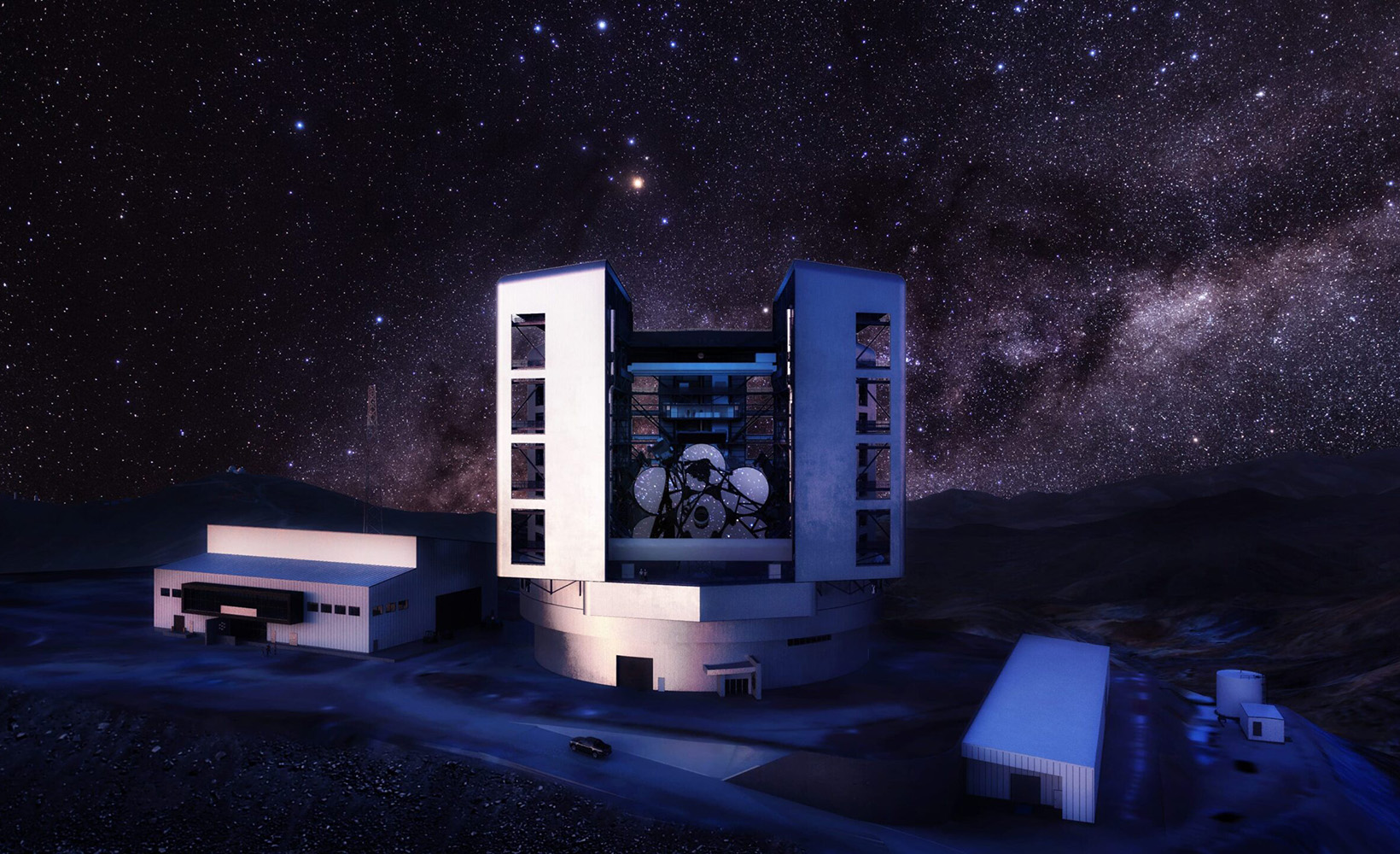
Texas A&M University and its partners in the Giant Magellan Telescope announced today (Sept. 26) that they have begun the four-year process to fabricate and polish the telescope's seventh and final primary mirror — the last required to complete the GMT’s 368-square-meter light-collecting surface, the world’s largest and most challenging optics ever produced. Together, the mirrors will collect more light than any other telescope in existence, allowing humanity to unlock the secrets of the Universe by providing detailed chemical analyses of celestial objects and their origin.
Last week, the University of Arizona's Richard F. Caris Mirror Lab closed the lid on nearly 20 tons of the purest optical glass inside a one-of-a-kind oven housed beneath the stands of the Arizona Wildcats Football Stadium. The spinning oven will heat the glass to 1,165 degrees Celsius so that as it melts, it is forced outward to form the mirror’s curved paraboloid surface. Measuring 8.4-meters in diameter — about two stories tall when standing on edge — the mirror will cool during the next three months before moving into the polishing stage.
At 50 million times more powerful than the human eye, “the telescope will make history through its future discoveries,” notes Buell Jannuzi, director of Steward Observatory and head of the Department of Astronomy at the University of Arizona as well as principal investigator for the fabrication of the GMT's primary mirror segments. “We are thrilled to be closing in on another milestone in the fabrication of the Giant Magellan Telescope.”
The casting of the seventh GMT 8.4-meter primary mirror is a tremendous milestone. All the pieces of the enormous GMT primary mirror will be in place, and a large technical hurdle for the project will be passed. ... The GMT is now another critical step closer to being the superb research instrument that can complement the James Webb Space Telescope and execute groundbreaking and unique science.
The most recently completed primary mirror is ready for integration into a giant support system prototype early next year for final optical performance testing. This testing will serve as the dress rehearsal for all seven primary mirrors. Once assembled, all seven mirrors will work in concert as one monolithic 25.4-meter mirror — a diameter equal to the length of a full-grown blue whale — resulting in up to 200 times the sensitivity and four times the image resolution of today’s most advanced space telescopes.
“The casting of the seventh GMT 8.4-meter primary mirror is a tremendous milestone,” said Texas A&M astronomer Dr. Darren L. DePoy, inaugural holder of the Rachal-Mitchell-Heep Endowed Professorship in Physics in the Department of Physics and Astronomy and deputy director of the George P. and Cynthia Woods Mitchell Institute for Fundamental Physics and Astronomy. “All the pieces of the enormous GMT primary mirror will be in place, and a large technical hurdle for the project will be passed."
DePoy, who serves as associate dean for research infrastructure in the College of Arts and Sciences, has built various instruments and components for the GMT along with fellow astronomers and researchers within Texas A&M's Charles R. ’62 and Judith G. Munnerlyn Astronomical Laboratory. In addition to a primary mirror that in combination will be more than 2.5 times larger than any telescope mirror in history, he says the telescope will feature novel instruments capable of directly imaging planets and finding potentially habitable ones while also helping to redefine the fundamental parameters of the universe.

"The casting of this mirror will nearly complete a multi-decade long process at the University of Arizona Caris Mirror Lab, which is renowned for its ability to create the world's largest optical components," DePoy added. "The GMT is now another critical step closer to being the superb research instrument that can complement the James Webb Space Telescope and execute groundbreaking and unique science."
The Giant Magellan Telescope will be the first extremely large telescope to complete its primary mirror array. With strong operational infrastructure completed at the telescope site in Chile, focused manufacturing is taking place on the telescope’s critical subsystem before starting on the enclosure.
“We are in an important stage of fabrication, with much of the manufacturing happening in the United States,” said Robert Shelton, president of the Giant Magellan Telescope.
The 39-meter-tall telescope structure is being manufactured with 2,100 tons of American steel at a newly-built manufacturing facility in Rockford, Illinois, and fabrication of the telescope’s first of seven adaptive secondary mirrors — a one-for-one pair with each of the seven primary mirrors — is underway.

“The combination of light-gathering power, efficiency, and image resolution will enable us to make new discoveries across all fields of astronomy,” added Rebecca Bernstein, Chief Scientist for the Giant Magellan Telescope. “We will have a unique combination of capabilities for studying planets at high spatial and spectral resolution, both of which are key to determining if a planet has a rocky composition like our Earth, if it contains liquid water, and if its atmosphere contains the right combination of molecules to indicate the presence of life.”
The Giant Magellan Telescope project is the work of a distinguished international consortium of leading universities and science institutions. The telescope is expected to see first light by the end of the decade and will work to answer some of humanity’s most pressing questions, including where we come from and whether or not we are we alone in the Universe.
To learn more about the Giant Magellan Telescope, visit https://giantmagellan.org/.
For additional information about astronomy at Texas A&M, go to https://physics.tamu.edu/research/astronomy/.
Story courtesy of the Giant Magellan Telescope Corporation.
